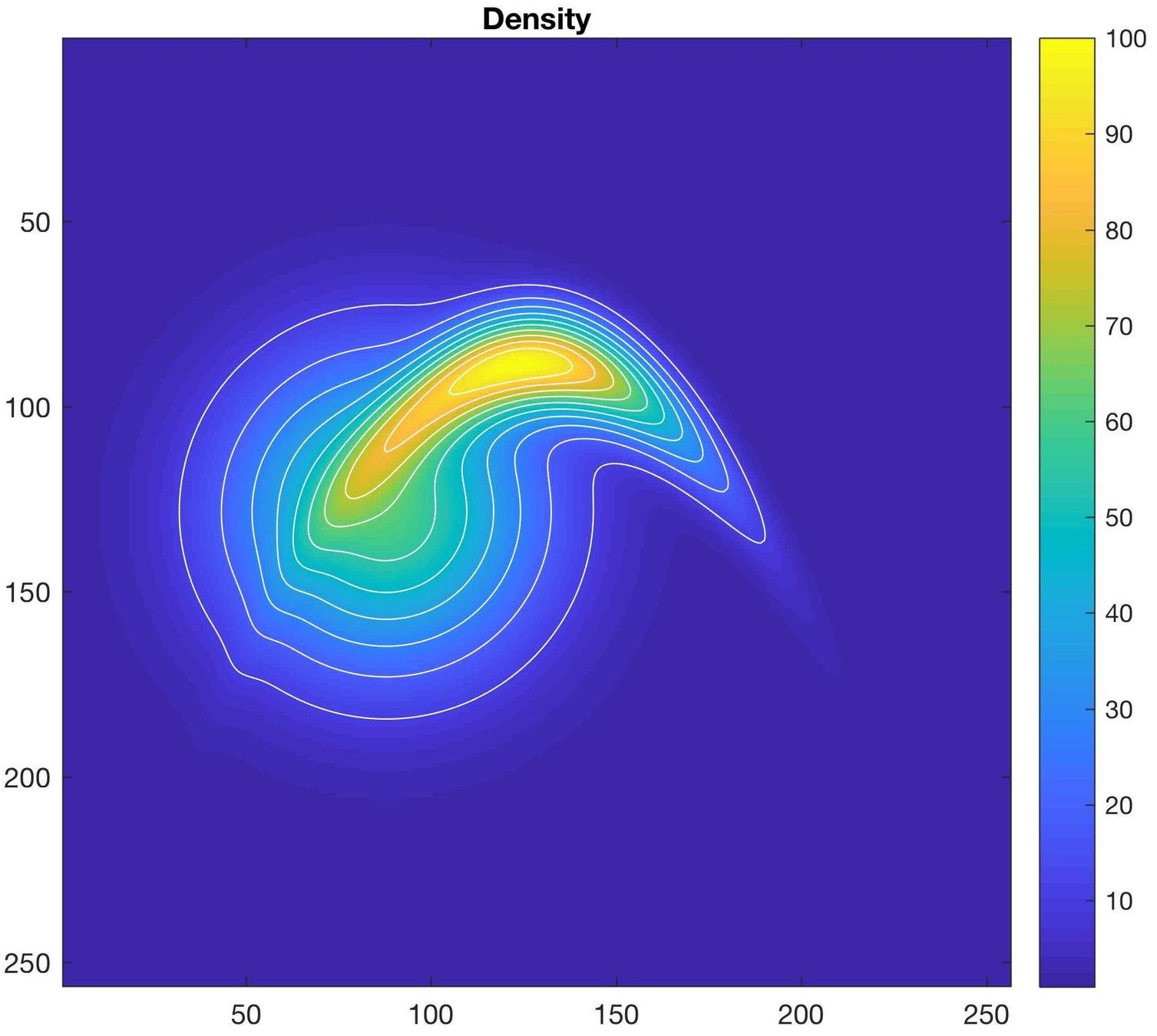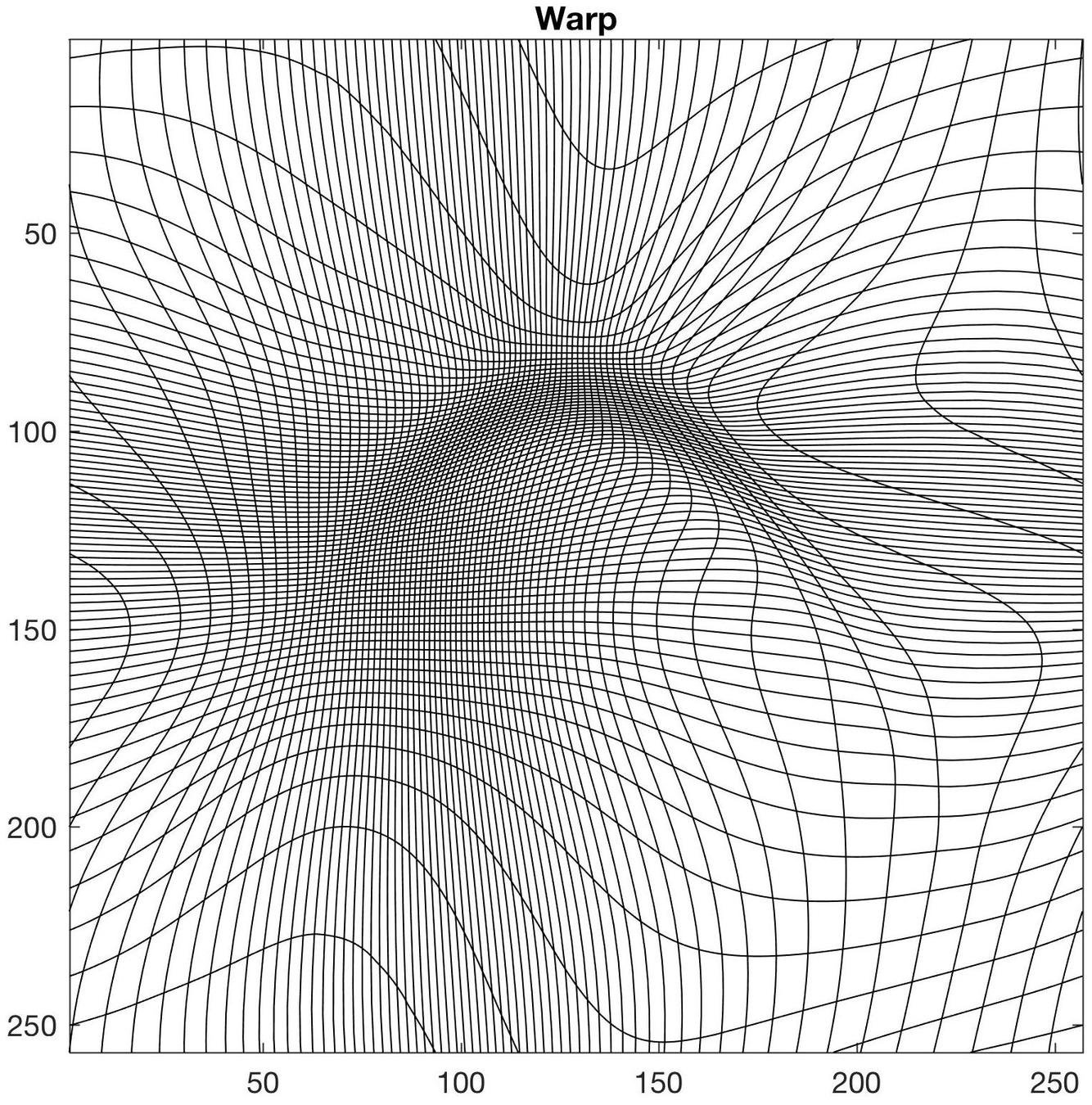Abel Laureate Luis Caffarelli: a glimpse of his work
Klas Modin

Luis Ángel Caffarelli
Nationality: Argentine–American
Born: 1948
PhD 1972 (University of Buenos Aires)
Supervisor:
Calixto Calderón
Affiliations:
University of Minnesota 1973-1983
Courant Institute, NYU 1980-1982
University of Chicago 1983-1986
IAS Princeton 1986-1996
Courant Institute, NYU 1994-1997
University of Texas at Austin 1997-today
For his seminal contributions to regularity theory for nonlinear partial differential equations including free-boundary problems and the Monge-Ampère equation.

Research fields
Free boundary problems
Fluid dynamics (Navier-Stokes)
Stefan problem
Nonlinear PDE
Monge-Ampere equation
etc.
Focus of today
Optimal mass transport (OMT)
Question (Monge 1781): Cheapest way to transport one mass distribution to another?


Mathematical formulation:
Additional requirement: \(T\) should minimize
Example of transport map


Transport map
Polar decomposition of matrices
acts on:
via:
Bundle structure




Bundle structure




Bundle structure




"Square root" equation:
Bundle structure




Factorization theorem:
Bundle structure




Vertical gradient flow:

Bundle structure




Vertical gradient flow:


Bundle structure


Horizontal gradient flow:

Relative entropy:
Bundle structure


Horizontal gradient flow:

Lifted gradient flow on \(K\) for
Bundle structure


Horizontal gradient flow:

Hessian of \(F(P)\) strictly positive on \(K\) \(\Rightarrow\) unique limit!
Nice, but...
...what about Monge-Ampere and Caffarelli?!
?
Linear optimal mass transport
\(\mathrm{P}(n) \iff \) multivariate Gaussians with zero mean

\(\Rightarrow\) transport map \(T:\mathbb{R}^n \to \mathbb{R}^n\) linear, \(T(x) = A x\)
\(\Rightarrow\)
\(L^2\) instead of \(L^1\) cost
Fundamental result for \(L^2\) OMT
Theorem (Brenier 1987):
\(\mu_0,\mu_1\) prob measures on \(\Omega\subset\mathbb R^n\) (open, bounded) with \(\mu_i=\rho_id \mathbf x\)
Then \((*)\) has unique solution \[ T = \nabla \psi\]
where \(\psi:\Omega \to \mathbb R\) is convex
\(\psi\) solves the weak Monge-Ampere equation \[\int_\Omega \eta \rho_1 dx = \int_\Omega (\eta\circ\nabla\psi) \rho_0 dx,\qquad \forall \eta \in C(\Omega) \]
Note: \(\psi\in C^2(\Omega) \Rightarrow \rho_1\circ\nabla \psi\det(\nabla^2 \psi) = \rho_0 \) (strong MA)
Fundamental result for \(L^2\) OMT
Theorem (Brenier 1991):
\(T \in L^2(\Omega,\mathbb{R}^n)\) such that \(T_*\mu_0 = \mu_1\)
Exist unique \(S:\Omega\to\Omega\) with \(S_*\mu_0 = \mu_0\) and convex \(\psi\) such that \[T = (\nabla \psi) \circ S \]
Note: \(\psi\in C^2(\Omega) \Rightarrow \rho_1\circ\nabla \psi\det(\nabla^2 \psi) = \rho_0 \) (strong MA)

\(T\)
\(\nabla\psi\)
\(S\)
Fundamental result for \(L^2\) OMT
Theorem (Brenier 1991):
\(T \in L^2(\Omega,\mathbb{R}^n)\) such that \(T_*\mu_0 = \mu_1\)
Exist unique \(S:\Omega\to\Omega\) with \(S_*\mu_0 = \mu_0\) and convex \(\psi\) such that \[T = (\nabla \psi) \circ S \]
Note: \(\psi\in C^2(\Omega) \Rightarrow \rho_1\circ\nabla \psi\det(\nabla^2 \psi) = \rho_0 \) (strong MA)
Subdifferential: \(\partial \psi(x) = \{u \in\mathbb{R}^n\mid \forall y, \; \psi(y) \geq \psi(x) + u\cdot (y-x) \} \)
\(x\)
\(\psi(x)\)
\(\psi(x) + u\cdot(y-x)\)
\(\psi(y)\)
\(y\)
Regularity obstructions

Non-convex domain

Negative curvature domain
[cf. Villani 2009]
"There is no hope for general regularity results
outside the world of nonnegative sectional curvature"
[Villani 2009]
Caffarelli's regularity theory
Theorem (Caffarelli 1992):
\(\mu_0,\mu_1\) prob measures on \(\Omega\subset\mathbb R^n\) (convex) with \(\mu_i=\rho_id \mathbf x\)
\(\rho_i \in C^{k,\alpha}(\Omega), \quad 0<a\leq \rho_i(x) \leq b < \infty \)
Then \((*)\) has unique solution \[ T = \nabla \psi\]
where \(\psi\in C^{k+2,\alpha}(\Omega)\) is convex
\(\psi\) solves the strong Monge-Ampere equation \[\rho_1\circ\nabla \psi\det(\nabla^2 \psi) = \rho_0 \]
Riemannian structure of OMT

Riemannian metric
Induces metric
[Benamou & Brenier (2000), Otto (2001)]
Invariance: \( S\in\mathrm{Diff}_{\mu_0}(\Omega)\)
Exactly \(L^2\)-Wasserstein distance
OMT \(\leftrightarrow\) hydrodynamics
[Arnold 1966, Hamilton 1982, Caffarelli 1992, Benamou and Brenier 2000, Otto 2001]






Brenier's polar
factorization: \(F = \nabla P\circ S\)
Remember:
\(T = \nabla P\) solves OMT problem with \(\mu_0 = d\mathbf x\) and \(\mu_1 = \rho\,d\mathbf x\)
hydrodynamics
OMT
Summary
Slides available at: slides.com/kmodin
(from an applied perspective)
Caffarelli's work enables "safe ground" for geometers to work with smooth optimal transport